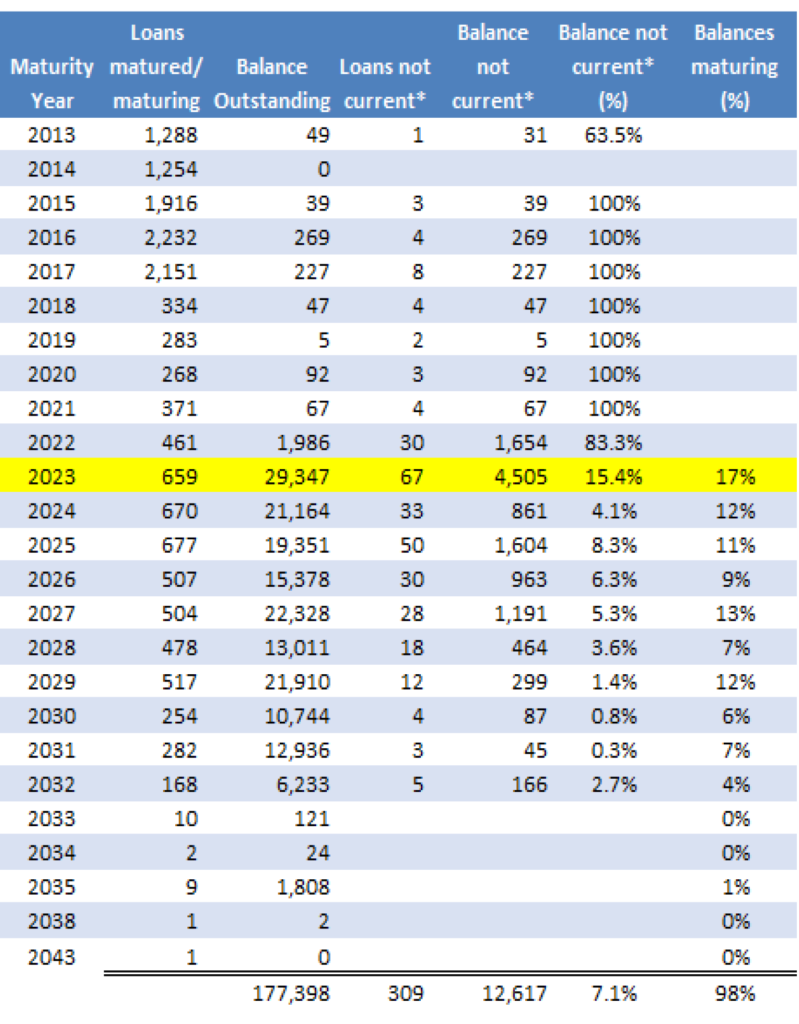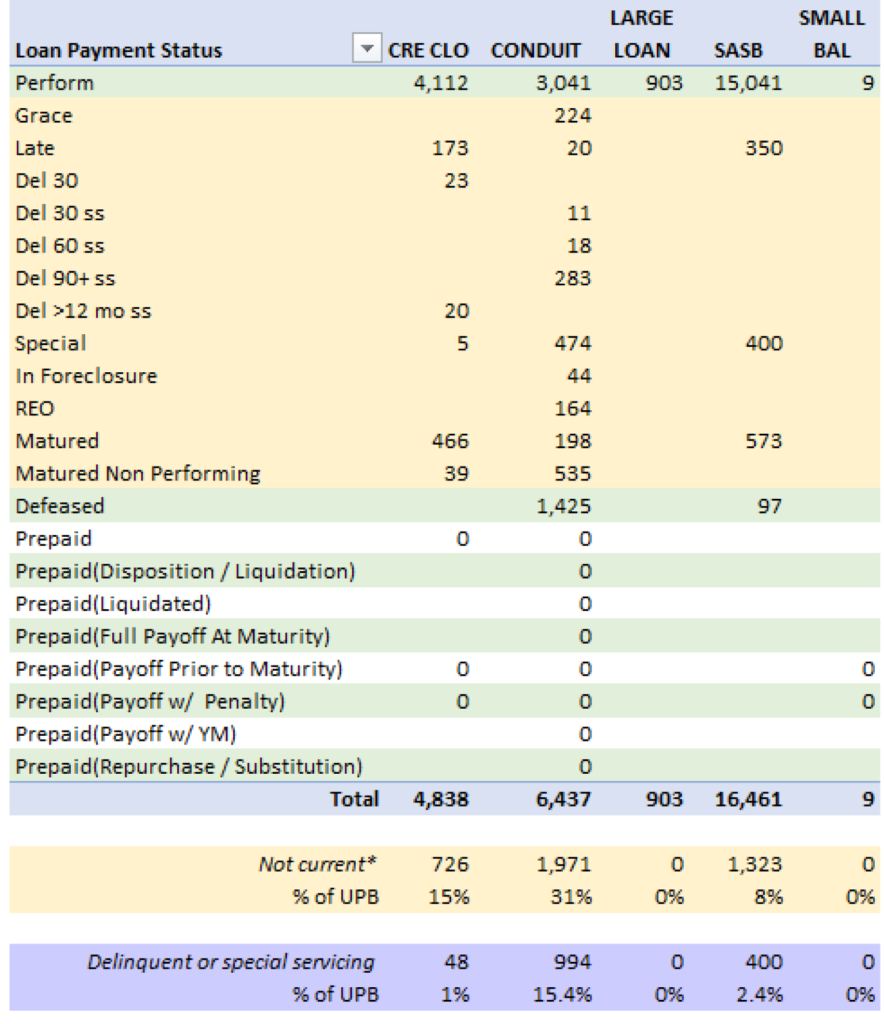By the Numbers
A closer look at office performance
Mary Beth Fisher, PhD | March 24, 2023
This document is intended for institutional investors and is not subject to all of the independence and disclosure standards applicable to debt research reports prepared for retail investors. This material does not constitute research.
The nearly $3 trillion US office market is on everyone’s radar these days. Potential defaults could have repercussions across commercial real estate and financial markets. Office property prices already have dropped 13% year-over-year, although a 2.3% delinquency rate for US office properties in CMBS and a 4.2% special servicing rate appear moderate. A more detailed dive shows a large maturity wall this year for loans securitized by office properties across both traditional CMBS and CRE CLOs, and up to 15% of those maturing balances are in some category of non-current status.
Rating agencies typically report aggregate delinquency rates across securitizes product types, which may then be broken down by property or asset type. For example, when S&P reports that 4.2% of office loans in US CMBS are in special servicing, that covers office loans in conduit or SASB deals rated by S&P. There are two problems with this:
- That delinquency and special servicing rate does not include office properties in CRE CLOs, so it is already missing some of the higher-risk transitional loans in the market
- Those rates are calculated as the sum of loan balances in special servicing divided by total loan balances outstanding. But commercial real estate loans tend to have the highest default rates at maturity, and loans that have matured can continue performing even as they negotiate modifications, extensions or seek new financing
To truly evaluate market conditions requires a broader look at loan performance and a more detailed view of the maturity wall for office properties. There are currently about $177 billion of loans for office properties that are securitized in CMBS or CRE CLOs (Exhibit 1). That’s 6% of the estimated $2.8 trillion asset value of the US office market. The maturity wall shows that $29 billion, or 17% of outstanding balances, have a scheduled maturity date in 2023. This includes loans in CRE CLOs which often have multiple extension options beyond the initial maturity date. Of the $29 billion maturing this year, over 15% of those loans, or $4.5 billion, have a payment status that is considered “not current”.
Exhibit 1: Maturity wall for office properties in US CMBS and CRE CLOs

Note: *Not current includes all outstanding loans whose payment status is not “performing” or “defeased”. Not current* loans may have payment status of: grace / late, in any stage of delinquency, special servicing, in foreclosure, real estate owned (REO), matured or matured non performing. Payment status as of March 23, 2023. Balances in millions.
Source: Bloomberg, Santander US Captial Markets
“Not current” is considerably broader than delinquent or even special servicing, with 15.4% falling into this category for loans maturing in 2023. A complete breakdown of the payment status of the office loans maturing in 2023 is shown in Exhibit 2. The maturity wall clearly has a big impact on performance, as fully $1.7 billion of the $4.5 billion of loans that are not current have already matured. The rate of delinquent or specially serviced loans, which are outlined by the box within the not current loans in yellow, is much lower at 6.6%.
Exhibit 2: Office loans maturing in 2023 by loan payment status

Note: Delinquent or special servicing totals includes all non-current loans, less those in grace / late period, matured or matured non-performing. UPB in millions.
Source: Bloomberg, Santander US Captial Markets
SASB, large and small balance office outperform CRE CLOs and conduit
The highest rates of not current or delinquent or specially serviced office loans across securitized products are in conduit and CRE CLO deals (Exhibit 3). The rolling maturity windows of loans in CRE CLOs does contribute to the high percentage of office loans that have matured and are not current. The $466 million of CRE CLO office loans that have matured and are still performing may be affected by the high cost of interest rates caps. Those caps typically expire at the first maturity date of the loan, then need to be replaced for each extension. The caps have become extremely expensive to replace due to the extraordinary rise in interest rates and increased volatility, and many borrowers have sought alternative arrangements or loan modifications.
SASB office performance continues to be strong, as the loans in those deals are typically for trophy office properties – one of the few office sectors where performance has remained relatively robust. The conduit deals tend to have a lot of office properties in secondary and tertiary markets, and lower cost, often lower quality buildings in primary markets. The delinquency and special servicing rate in conduit alone for loans maturing in 2023 is over 15%, which the not current rate is over 30%.
Exhibit 3: Office performance across product types for 2023 maturity loans

Note: Data through March 2023.
Source: Bloomberg, Santander US Captial Markets
The securitized office loans represent only a fraction of office loans outstanding. The majority of lending is done by banks, life insurance companies and office REITs. There is clearly more stress in the office market that is being captured by CMBS delinquency rate data. Of office loans outstanding in the securitized space, fully 40% hit a maturity date in 2023 to 2025. The pressure on office property is just getting started.


